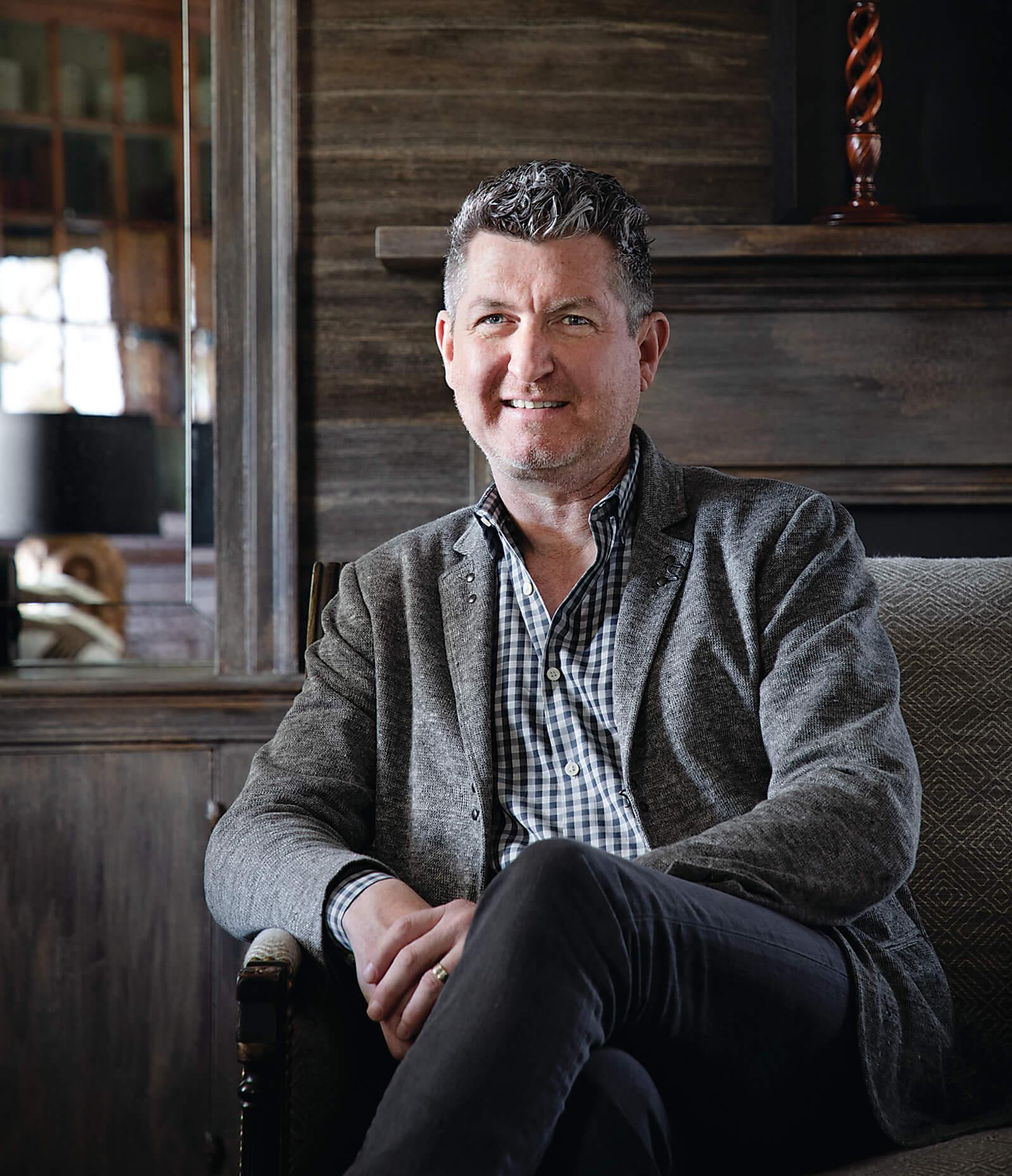Home & Living
A Story to Tell
Interior designer Patrick Sutton mixes beautiful spaces with narratives in his new book.

When Patrick Sutton first arrived in Baltimore, it was 1985 and he figured he’d give it a year. More than 30 years later, he says with a laugh, “I just never left, you know?”
Sutton grew up in New York. His father, Horace Sutton, was a fairly renowned travel writer with a big personality, and Sutton had a self-described fanciful and magical childhood as he traveled the globe with his parents. “I was afforded the ability to see the world’s most beautiful places and most storied locations,” he says. But that wasn’t his whole story. Sutton’s mom had schizophrenia. “It was not something you talked about.” And this very deep, dark secret shaped the future designer. “In order to survive, I had to become a very fast student of everybody else,” he says. “And so I became intent on watching everybody’s interaction with one another, and I became a de-facto expert on people’s non-verbal communication—just being observant. I also learned empathy. That came out of survival.” And it shaped his entire career. “I’m able to listen intently to what someone is saying and, quite frankly, what they’re not saying.”
After graduating from architecture school, Sutton had offers at firms in his hometown, but knowing what a huge shadow was cast by his father, Sutton looked elsewhere. He had an opportunity in D.C., but he didn’t have an instant connection to the city. One of the firms mentioned their Baltimore headquarters and, after a visit, Sutton was charmed. And “to be truthful, in 1985, Baltimore was not the bastion of design,” he says. “Nobody was really spending any money or investing in design the way it is now.”
His fingerprints are now all over the city, from the Sagamore Pendry Hotel to restaurant interiors—including Cinghiale, Tagliata, and Rye Street Tavern—to countless home renovations, and, most recently, a big, beautiful book aptly titled Storied Interiors. The book not only includes gorgeous photos but the inspirations behind the designs. Sutton studied architecture but felt “it wasn’t fulfilling because I wasn’t able to complete the story from beginning to end.” So he switched to interior design. Now at the pinnacle of his career, a book was just the next natural step, especially for the son of a storyteller—the book is dedicated to his father.
Sutton says he was influenced by Under Armour chair Kevin Plank, for whom the designer has worked for more than a decade. Plank is also a teller of stories. “We see the world in a very similar way,” Sutton explains. “And he was always like, ‘What’s the story behind this?’ He in some ways helped me formalize the fact that I was writing narratives before I was doing projects.” And because of that, he knew his book had to be more than just a pretty coffee table book. It had to combine both his love of design and his need to tell its story.
It took some convincing to his book editor. “The reality is she’s right that the majority of people who buy coffee table books flip through the pictures. But that isn’t who I am, and that’s not the story I have to tell.” And each project tells a different narrative. Sutton’s ability to adapt and not pigeonhole himself in one style has been his biggest success.
“The approach towards storytelling in a residence versus a restaurant or hotel is about the attention span that you’re designing towards,” he says. “So, if it’s a residential project, you are creating an environment that has to be adaptive for a lifetime. When it’s a restaurant, I want it to capture attention for two hours, and if it’s a hotel, a couple of days.”
“I’ve had clients—and these are big clients, these are people who interviewed designers from Paris—and they said to me, ‘You know, it’s interesting. I looked at your work that you did, and none of it was anything that I wanted. However, all of it was very well done. And so what that told me is that if you can do this for each one of those clients, you can take what I want and deliver it for me.’”
As Sutton looks around his Federal Hill office, he says, “This city has afforded me the opportunity to shine.”